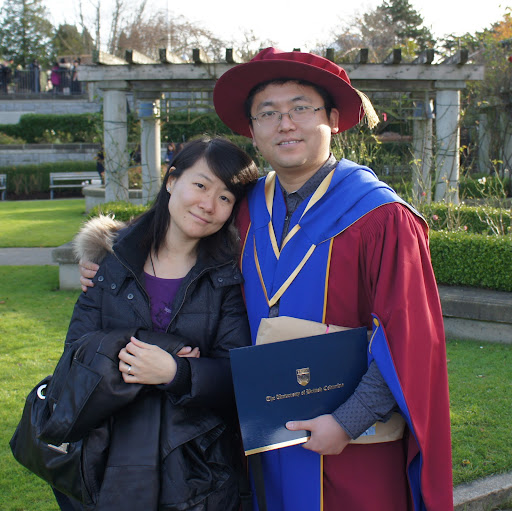Jian Xu
age ~42
from Ellicott City, MD
- Also known as:
-
- Jia N Xu
Jian Xu Phones & Addresses
- Ellicott City, MD
- Columbia, MD
- Merced, CA
- West Lafayette, IN
Isbn (Books And Publications)

Interfacial Wave Theory of Pattern Formation : Selection of Dendritic Growth and Viscous Fingering in Hele-Shaw Flow
view sourceAuthor
Jian J. Xu
ISBN #
3540631453

Niao Kan Di Qiu: Zhongguo Zhan Lue Dao Dan Zhen Di Gong Cheng Ji Shi = Niao Kan Di Qiu
view sourceAuthor
Jian Xu
ISBN #
7503319267

Qing Shao Nian Fa Xue Xin Shi Ye: Jin 20 Nian Hua Zheng Qing Shao Nian Fan Zui Yan Jiu Cheng Guo
view sourceAuthor
Jian Xu
ISBN #
7811091488
License Records
Jian Xu
License #:
CC-0004606 - Active
Category:
Accountancy
Issued Date:
Mar 18, 2004
Type:
C.P.A. Certificate
Lawyers & Attorneys

Jian Xu - Lawyer
view sourceISLN:
909583956
University:
Paris I University, 1994; Shanghai Institute of Humanities, 1982; University of Wuhan, 1986
Name / Title
Company / Classification
Phones & Addresses
KOKO ENTERPRISES INC
Us Patents
-
Electronically Tunable Rf Diplexers Tuned By Tunable Capacitors
view source -
US Patent:6683513, Jan 27, 2004
-
Filed:Oct 24, 2001
-
Appl. No.:10/000471
-
Inventors:Khosro Shamsaifar - Ellicott City MD
Jian Xu - Clarksville MD -
Assignee:Paratek Microwave, Inc. - Columbia MD
-
International Classification:H01P 1213
-
US Classification:333135, 333209
-
Abstract:A diplexer includes a first tunable bandpass filter connected to a first port, a second tunable bandpass filter connected to a second port, and a coupling element for coupling the first bandpass filter and the second bandpass filter to a third port. Each of the tunable bandpass filters includes a tunable capacitor, wherein a control signal applied to the tunable capacitor controls the transmission characteristic of the filter. The tunable capacitor can be a tunable dielectric varactor or a microelectromechanical variable capacitor. The coupling element can include one of: a circulator, a T-junction, and an orthomode transducer. Each of the first and second filters can comprise a fin line filter including a plurality of tunable dielectric capacitors mounted within a waveguide for controlling the filter transmission characteristics. Fixed bandpass filters can be inserted between each of the tunable bandpass filters and the coupling element.
-
Systems And Methods For Providing Asynchronous Messaging
view source -
US Patent:7437464, Oct 14, 2008
-
Filed:Jan 31, 2003
-
Appl. No.:10/355264
-
Inventors:Jian Xu - Herndon VA, US
Chung-Wen Yuan - North Potomac MD, US -
Assignee:Federal Home Loan Mortgage Corporation - McLean VA
-
International Classification:G06F 15/16
-
US Classification:709227, 709228, 709229
-
Abstract:Systems and methods are provided for providing asynchronous communication between a source processor and a destination processor. In one embodiment, a method includes receiving an information request; making a first call to the destination processor, such that the first call includes the information request; and ending the first call while the destination processor determines an information response, such that said ending terminates a synchronous communication between the source processor and the destination processor. Furthermore, the method includes making a second call to the source processor, such that the second call includes the information response; ending the second call, such that said ending terminates a synchronous communication between the destination processor and the source processor; and providing asynchronously the information response.
-
In Situ Oil Cleanup And Recovery Using Smart Polymer Integrated Surface Vessels
view source -
US Patent:20220177331, Jun 9, 2022
-
Filed:Feb 25, 2022
-
Appl. No.:17/681581
-
Inventors:- Hoboken NJ, US
Ronald Besser - New Providence NJ, US
Jian Xu - West Lafayette IN, US
Wei Xu - Farmingdale NY, US
Brendan Englot - New York NY, US
Chang-Hwan Choi - Tenafly NJ, US -
Assignee:THE TRUSTEES OF THE STEVENS INSTITUTE OF TECHNOLOGY - Hoboken NJ
-
International Classification:C02F 1/40
C02F 1/28 -
Abstract:Smart membranes are integrated into a small, unmanned surface vessel to enable the efficient, automated cleanup of oil spills. Such a vessel has the potential to provide a low-cost, modular solution for day-to-day oil-spill cleanup operations, especially in confined aquatic areas (e.g., under piers or in the small spaces between marine vessels and piers). The membranes are provided on the surface of a conveyor belt that circulates the membranes through the surrounding body of water for oil collection, as well as through an internal reduction chamber of the vessel for oil release. The smart membranes are adapted to attract and repel oil in response to low-voltage commands applied across the conveyor belt, using a process that is repeatable for a number of cycles, offering high efficiency and long durability. Segments of the conveyor belt can be electrically isolated from one another to allow disparate electrical potentials to be imposed thereon.
-
In Situ Oil Cleanup And Recovery Using Smart Polymer Integrated Surface Vessels
view source -
US Patent:20230025974, Jan 26, 2023
-
Filed:Aug 4, 2022
-
Appl. No.:17/881406
-
Inventors:- Hoboken NJ, US
Jian Xu - West Lafayette IN, US
Wei Xu - Farmingdale NY, US
Brendan Englot - New York NY, US
Chang-Hwan Choi - Tenafly NJ, US -
Assignee:THE TRUSTEES OF THE STEVENS INSTITUTE OF TECHNOLOGY - Hoboken NJ
-
International Classification:C02F 1/40
C02F 1/28 -
Abstract:Smart membranes () are integrated into a small, unmanned surface vessel () to enable the efficient, automated cleanup of oil spills. Such a vessel () has the potential to provide a low-cost, modular solution for day-to-day oil-spill cleanup operations, especially in confined aquatic areas, such as under piers and in the small spaces between marine vessels and piers. The smart membranes () are provided on the surface of a conveyor belt () that circulates the membranes () through the surrounding body of water () for oil collection, as well as through an internal reduction chamber () of the vessel () for oil release. The smart membranes () are adapted to attract and repel oil () in response to low-voltage commands applied across the conveyor belt (), using a process that is repeatable for a number of cycles, offering high efficiency and long durability (FIG. ).
-
In Situ Oil Cleanup And Recovery Using Smart Polymer Integrated Surface Vessels
view source -
US Patent:20200331776, Oct 22, 2020
-
Filed:Dec 4, 2018
-
Appl. No.:16/766066
-
Inventors:- Hoboken NJ, US
Jian Xu - West Lafayette IN, US
Wei Xu - Farmingdale NY, US
Brendan Englot - New York NY, US
Chang-Hwan Choi - Tenafly NJ, US -
Assignee:THE TRUSTEES OF THE STEVENS INSTITUTE OF TECHNOLOGY - Hoboken NJ
-
International Classification:C02F 1/40
C02F 1/28 -
Abstract:Smart membranes () are integrated into a small, unmanned surface vessel () to enable the efficient, automated cleanup of oil spills. Such a vessel () has the potential to provide a low-cost, modular solution for day-to-day oil-spill cleanup operations, especially in confined aquatic areas, such as under piers and in the small spaces between marine vessels and piers. The smart membranes () are provided on the surface of a conveyor belt () that circulates the membranes () through the surrounding body of water () for oil collection, as well as through an internal reduction chamber () of the vessel () for oil release. The smart membranes () are adapted to attract and repel oil () in response to low-voltage commands applied across the conveyor belt (), using a process that is repeatable for a number of cycles, offering high efficiency and long durability (FIG. ).
Resumes

Jian Xu
view source
Jian Xu
view source
Jian Xu
view sourceEducation:
Shanghai Jiao Tong University 1978 - 1983
Doctor of Medicine, Doctorates, Medicine
Doctor of Medicine, Doctorates, Medicine
Skills:
Sr. Echocardiographer

Jian Xu
view source
Jian Xu
view source
Set Designer
view source
Jian Xu
view source
Jian Xu
view sourceMyspace
Youtube
Flickr

XU Jian
view source
Jian Ming Xu
view source
Jian Xu
view source
Jian Xu
view source
Jian Zhong Xu
view source
Jian Xu
view source
Jian Xu
view source
Chien Jian Xu
view sourceGoogleplus

Jian Xu
Work:
MSRA - Intern (2010)
Education:
University of Science and Technology of China

Jian Xu
Education:
Drexel University

Jian Xu
Education:
Peking University

Jian Xu
About:
The one and only Xunami. You will know what this means once you get to know me better.
Tagline:
A natural phenomenon

Jian Xu
Tagline:
Yoyo

Jian Xu

Jian Xu

Jian Xu
Get Report for Jian Xu from Ellicott City, MD, age ~42














